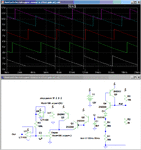neazoi
Advanced Member level 6

- Joined
- Jan 5, 2008
- Messages
- 4,157
- Helped
- 13
- Reputation
- 26
- Reaction score
- 15
- Trophy points
- 1,318
- Location
- Greece
- Activity points
- 37,198
Yes, it is getting a little confusing. :-? The circuit in #34 is includes my modifications to iimagine"s circuit to solve a couple problems I noted and added the output buffer. Note that I also changed some resistor values which seemed to improve circuit performance and increase the output voltage with a 12V supply.
Ok I will try this today and let you know.





